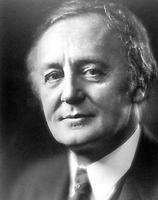Folk Music, Franco-Canadian
French colonists brought their customs, way of life and music with them to the shores of the St Lawrence. From the Conquest of 1759-60, until well into the 20th century, these French communities, mostly rural, persisted in a linguistic and cultural isolation that helped maintain the vitality and strength of their traditional culture.
French-Canadian instrumental music is derived from several sources. Unfettered by the linguistic constraints affecting song, it has benefited from its contact with CELTIC MUSIC and the music of France and the British Isles. While retaining some characteristics of the country of origin, French-Canadian folk music has become freer and more lyrical, and has adapted to the rigours of the country and the Latin temperament of its inhabitants. It is essentially functional music, meant to accompany dances such as quadrilles, the cotillion, the jig (a solo demonstration of skill) and various rondes and jeux dansés.
The violin (fiddle), the most common instrument in French-Canadian folk music, dates back to New France. Joseph Allard, Jean CARIGNAN and Jos Bouchard established reputations as masters of the fiddle. The harmonica came from Germany via the US in 1866 and quickly became popular. In 1892 the diatonic accordion also arrived from Germany and became a favourite instrument among French Canadians. Two of its best-known interpreters in Québec were Alfred Montmarquette and Philippe Bruneau. The jew's harp and simple percussion instruments such as spoons, bones and feet are also characteristic of the traditional music of French Canada.
Folk Songs
Folk songs seem to have come from the people, the peasant classes, and were passed down from generation to generation through oral tradition, renewing and transforming along the way. The songs have basic, straightforward verses, rudimentary metre and simple vocabulary. Some French-Canadian folk songs derive from a medieval French tradition brought over by the early colonists; they exist today as an old form of folkloric repertory, richer than anything now found in France. Other songs are of more recent composition with rough and imitative lyrics. Expressed as lament or satire, these songs reflect the social conditions of the French-Canadian community: the life of the voyageurs, the lumber camps, disasters and misfortunes, and political and communal life. Acadia has long been a rich source of this form of music.
Research on folk songs, which began in France in 1853, had an impact in Canada. In 1863 Hubert LaRue published an article entitled "Les chansons populaires et historiques du Canada" in Le Foyer canadien. He persuaded Ernest GAGNON to collect and transcribe tunes for some of the lyrics he had collected. Two years later Gagnon published a work entitled Chansons populaires du Canada with melodies and abundant commentary. In 1916 Marius BARBEAU, an anthropologist with the National Museum of Canada, began collecting folk songs. His collection of more than 10 000 songs is preserved in the Canadian Centre for Folk Culture Studies in Hull (now Canadian Museum of Civilization). His major books on traditional songs are Romancero du Canada (1937), Jongleur Songs of Old Quebec (1962), Le Rossignol y chante (1962), En roulant ma boule (1982) and Le Roi boit (1987).
In 1944 Luc Lacourcière founded the Archives de folklore at Université Laval. Under his direction, Conrad Laforte began classifying traditional songs in 1954 and between 1977 and 1987 he published the Catalogue de la chanson folklorique in 6 volumes. From 1942 to 1993 Father Anselme Chiasson and Father Daniel Boudreau published Chansons d'Acadie in 11 volumes. Father Chiasson is also one of the founders of the Centre d'études acadiennes with the folklore archives at Université de Moncton. In Ontario, Father Germain Lemieux, founder of the Centre franco-ontarien de folklore, published Chansonniers franco-ontarien I and II in 1974 and 1975. In Manitoba, Marcien Ferland published Chansons à répondre du Manitoba in 1979. Since the beginning of the 1980s, some folklorists like Georges Arsenault, Charlotte Cormier and Donald Deschênes have been studying the repertoire of locally composed ballads.
See alsoFOLKLORE; FOLK DANCE.

 Share on Facebook
Share on Facebook Share on X
Share on X Share by Email
Share by Email Share on Google Classroom
Share on Google Classroom



